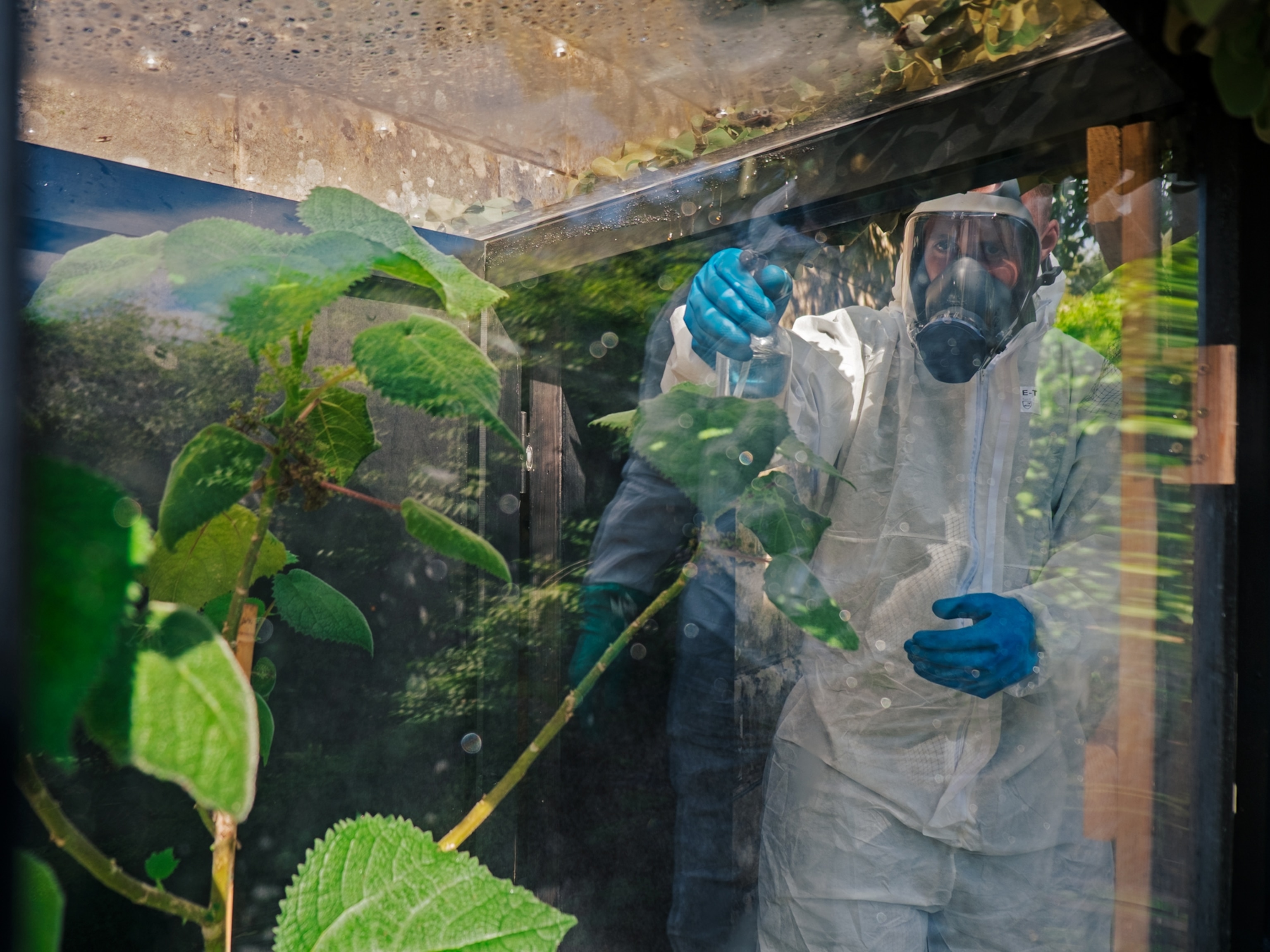
Alien Trees Would Bloom Black on Worlds With Double Stars
Plants may also move, secrete sunscreen, simulations suggest.
If any habitable alien planets are orbiting two or more stars, they've probably evolved trees that would look black to human eyes, a new simulation suggests.
Such shadowy plants may even move or secrete sunscreen to shield themselves from deadly star flares, the research leader speculates.
Sunlight fuels life on Earth by powering photosynthesis, a process that converts solar radiation and carbon into sugars. Our sun's color, temperature, and distance from Earth have coaxed photosynthetic plants to absorb most wavelengths of light except for infrared and green, which these plants instead strongly reflect.
But most stars in the nearby universe aren't like the sun.
About 80 percent of the Milky Way's stars are dim red dwarfs. As a result, astrobiologists have suggested that photosynthetic plants on worlds orbiting lone red dwarfs could take on hues of red, blue, yellow, purple, or even grayish-black to best absorb the starlight. (See "Distant Planets Could Have Plants of 'Alien' Colors.")
A third of all star systems, meanwhile, contain two or more stars, and it's not known how plants might evolve under mixed light sources.
"Rather than plants using light from, say, both a sunlike star and a red dwarf, we think you'd see them evolve a diversity of colors and use [the two types of starlight] preferentially," said simulation leader Jack O'Malley-James, an astrobiologist at the University of St. Andrews in the U.K.
"On a world orbiting two red dwarf stars, you'd essentially get one color, and you'd probably see them as black."
Alien Plants Would Fear the Flares
O'Malley-James and colleagues simulated an Earthlike world orbiting a variety of double- and triple-star systems. Some models contained only red dwarf stars, while others used one red dwarf and one sunlike star, or even two sunlike stars.
Enough light reached the virtual planet to support photosynthesis in most cases, with the world generally seeing as much energy as Earth receives from the sun.
But O'Malley-James warned that plants near red dwarf stars may have to evolve extra safeguards to survive.
"Planets have to be about five times closer [than Earth is to the sun] to support photosynthesis," he said. "Red dwarf stars are more active, and their solar flares will hit the surface of the planet more often. That's a problem for life."
(See "'Nightmare' Star Flares Dim Odds for Alien Life?")
As a result, O'Malley-James thinks land-based alien plants may evolve natural sunscreens to protect themselves. If the plants are in water, they may temporarily sink when they sense bursts of radiation to protect their vulnerable photosynthetic molecules.
"That plants might move—to sink or shrink under a rock to evade a solar flare—is a really cool idea," said Jane Greaves of the University of St. Andrews, an astrobiologist who is O'Malley-James' doctoral supervisor.
"This is the first simple attempt to think about the biology in these specific systems that are really common."
Nancy Kiang, a biometeorologist at the NASA Goddard Institute for Space Studies, has done extensive research on the possible colors of alien plant life.
Kiang, who wasn't aware of any previous plant-color modeling done for multiple-star systems, said she's eager to see O'Malley-James' research.
"I'd frankly be curious about what canopy structures would evolve, given two different light sources," she said.
How to Search for Non-Green Life
Speculating on the colors of alien plants and how the plants might behave isn't simply about satisfying curiosity.
Astronomers have already used powerful telescopes to sample light from the probable atmospheres of alien worlds, and in the future they hope to discern if photons of light are reflected off plants growing light-years away. (Related: "Nearby 'Super Earth' May Have Oceans, Thick Atmosphere.")
Running simulations now should help astronomers know what to look for when they start collecting real-life data.
"We're not quite there yet, but we have an idea of how to do it," the University of St. Andrews' Greaves told National Geographic News. "Within a decade, we should have instruments like the European Extremely Large Telescope to help us out. It's supposed to be built by 2018."
That telescope's 138-foot-wide (42-meter-wide) primary mirror should gather enough reflected light to get readings on the atmospheres of extrasolar planets and perhaps plant life, Greaves said.
Future space-based observatories, such as NASA's James Webb Space Telescope, could make the task much easier. Arrays of telescopes in space would be even better, but no missions have left the drawing board due to their complexity and cost.
"There are some ambitious plans out there, but it remains to be seen if they stick to their construction schedules," Greaves said.
The research about alien plant colors was presented April 19 at a meeting of the Royal Astronomical Society in the U.K.





